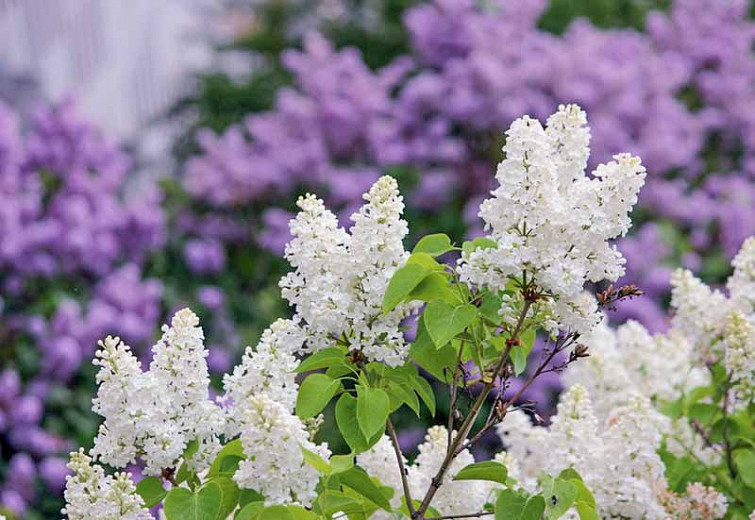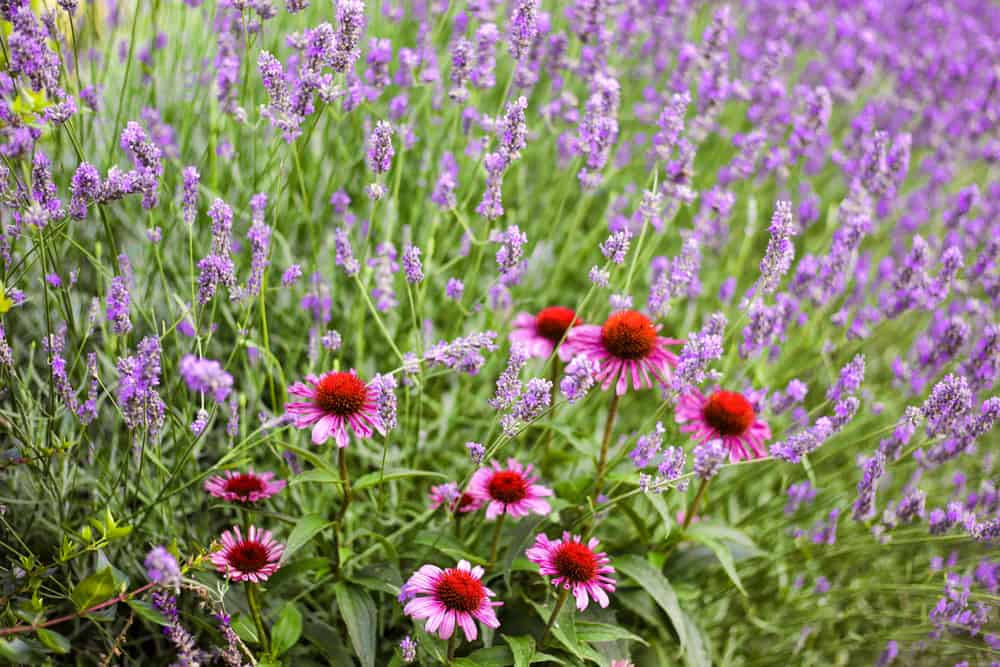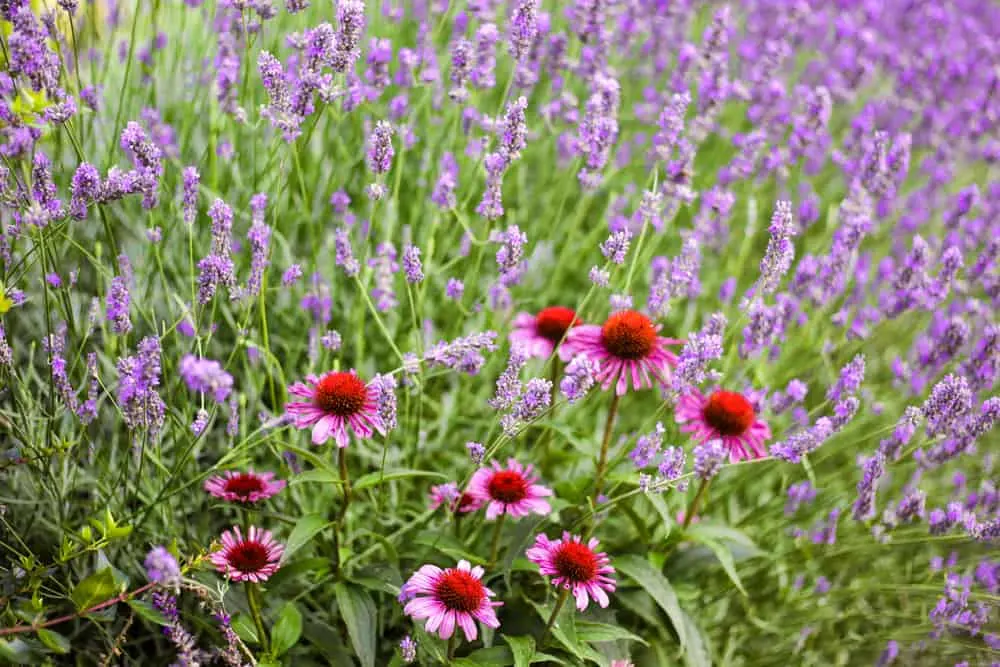Lilac Companion Plants That Will Make Your Garden Pop
Lilac Companion Plants That Will Make Your Garden POP
Lilacs are a classic springtime flower, known for their fragrant blooms and showy colors. But did you know that you can enhance their beauty even more by planting them with companion plants?
The right companion plants can help to:
- Extend the bloom time. Some companion plants will bloom before or after the lilacs, creating a continuous display of color in your garden.
- Highlight the lilac's colors. Companion plants with complementary or contrasting colors can help to make the lilacs stand out even more.
- Attract pollinators. Lilacs are a magnet for hummingbirds, butterflies, and other pollinators. Companion plants that also attract pollinators can help to create a more sustainable garden.
- Provide structure and interest. Companion plants can add height, texture, and interest to your lilac planting.
When choosing companion plants for lilacs, there are a few factors to keep in mind:
- Sunlight. Lilacs need full sun, so make sure your companion plants have the same sunlight requirements.
- Soil. Lilacs prefer well-drained soil, so avoid planting them with plants that prefer wet soil.
- Hardiness. Lilacs are hardy in USDA zones 3-8, so choose companion plants that are hardy in the same zones.
Here are some of the best companion plants for lilacs:
- Clematis. Clematis is a vining plant that can be trained to climb over or through a lilac bush. It blooms in the spring or summer, with flowers that come in a variety of colors, including purple, blue, white, and pink.

- Creeping phlox. Creeping phlox is a low-growing groundcover plant that blooms in the spring with small, pink or white flowers. It is perfect for filling in the space under a lilac bush.

- Daylily. Daylilies are a type of perennial that blooms in the summer with large, showy flowers. They come in a variety of colors, including yellow, orange, red, and purple. Daylilies are easy to care for and will thrive in full sun.

- Lady's mantle. Lady's mantle is a hardy perennial that blooms in the spring with small, white flowers. It has fern-like foliage that provides contrast to the lilac's leaves. Lady's mantle is deer-resistant and drought-tolerant.

- Peonies. Peonies are a type of herbaceous perennial that blooms in the spring with large, showy flowers. They come in a variety of colors, including pink, red, white, and yellow. Peonies are easy to care for and will thrive in full sun.

- Sedum 'Autumn Joy'. Sedum 'Autumn Joy' is a succulent plant that blooms in the fall with large, pink flowers. It is a hardy plant that can tolerate drought and poor soil conditions. Sedum 'Autumn Joy' will add color to your garden in the fall, when the lilacs are no longer blooming.

- Spirea. Spirea is a type of shrub that blooms in the spring with small, white or pink flowers. It comes in a variety of sizes, so you can find one that is right for your garden. Spirea is easy to care for and will thrive in full sun.

These are just a few of the many companion plants that you can grow with lilacs. With a little planning, you can create a beautiful and harmonious garden that will bloom all spring and summer long.
Lilacs are beautiful flowering shrubs that can add a touch of elegance to any garden. But did you know that there are a number of companion plants that can enhance the beauty of your lilacs?
Some of the best companion plants for lilacs include:
- Clematis: This vine can climb up and over your lilac bush, adding a touch of whimsical beauty. Gardenia Inspiration
- Daylilies: These colorful flowers bloom in the same season as lilacs, and they can help to extend the flowering season in your garden.
- Hostas: These shade-loving plants can help to fill in the space under your lilac bush, and their large, showy leaves can provide a striking contrast to the delicate flowers of the lilac.
- Peonies: These fragrant flowers bloom in the spring, just before the lilacs. They can add a touch of elegance and color to your garden.
- Spirea: This shrub blooms in the spring with white or pink flowers that look beautiful when planted near lilacs.
If you're looking to add some beautiful and complementary plants to your lilac bush, be sure to check out Gardenia Inspiration. This website has a wealth of information about lilac companion plants, including photos, plant descriptions, and planting tips.
FAQ of lilac companion plants
Question 1: What are some good companion plants for lilacs?
- Answer: Some good companion plants for lilacs include:
- Herbaceous peonies and tree peonies (Paeonia): These plants are compatible in color, fragrance, and form, and make each other look better. Plant peonies at your lilac's foot to hide its poorly clad legs and savor the beauty and pervasive perfume they lavish on those who passes-by.
- Hostas: These shade-loving plants provide a lush backdrop for the lilac's flowers. They also help to suppress weeds and improve the soil's drainage.
- Daylilies: These colorful flowers bloom at the same time as lilacs, so they can help to extend the flowering season in your garden. They are also relatively low-maintenance, making them a good choice for busy gardeners.
- Iris: These graceful flowers come in a variety of colors, so you can choose ones that complement the color of your lilacs. They also prefer similar growing conditions, so they are a good choice for companion planting.
- Roses: Roses and lilacs are both beautiful flowering shrubs that can add a touch of elegance to any garden. They also have similar water and soil requirements, so they can be planted together without any problems.
Question 2: What should I avoid planting near lilacs?
- Answer: Some plants that you should avoid planting near lilacs include:
- Other flowering shrubs: Planting too many flowering shrubs in one area can make your garden look cluttered and overwhelming. It is better to mix in some other types of plants, such as evergreens or grasses, to create a more balanced and visually appealing landscape.
- Vegetables: Lilacs can produce chemicals that can stunt the growth of vegetables. It is best to plant lilacs in a separate area of your garden from your vegetable patch.
- Fruit trees: Lilacs can also produce chemicals that can damage the fruit of fruit trees. If you want to plant both lilacs and fruit trees in your garden, it is important to plant them at least 10 feet apart.
- Evergreens: Evergreens can cast shade on lilacs, which can prevent them from flowering as well. If you want to plant evergreens near lilacs, it is important to choose ones that have a spreading growth habit, so they will not block the sunlight from the lilacs.
Question 3: What are the benefits of companion planting with lilacs?
- Answer: There are several benefits to companion planting with lilacs, including:
- Improved pollination: Some companion plants, such as peonies, can help to improve pollination of lilacs. This can lead to more flowers and a longer flowering season.
- Disease and pest control: Some companion plants, such as hostas, can help to repel pests and diseases from lilacs. This can help to keep your lilacs healthy and looking their best.
- Enhanced beauty: Companion planting can help to create a more visually appealing landscape. By planting different types of plants together, you can create interest and variety in your garden.
- Reduced maintenance: Some companion plants, such as daylilies, are relatively low-maintenance. This can free up your time to focus on other gardening tasks.
Question 4: How far apart should I plant lilacs and their companion plants?
- Answer: The distance at which you plant lilacs and their companion plants will depend on the size of the plants. For example, if you are planting small lilac shrubs, you can plant them about 3 feet apart. If you are planting larger lilac trees, you will need to plant them about 10 feet apart. You should also consider the mature size of the companion plants when determining spacing.
Question 5: What is the best time of year to plant lilacs and their companion plants?
- Answer: The best time to plant lilacs and their companion plants is in the spring, after the last frost. This gives the plants time to establish themselves before the hot summer weather arrives. If you live in a warm climate, you can also plant lilacs in the fall.
Image of lilac companion plants
5 different images of lilac companion plants from Pinterest:
- Herbaceous peonies: These flowers are compatible in color, fragrance, and form, and make each other look better. They also bloom at the same time as lilacs, so you'll have a long season of color in your garden.

- Daylilies: These flowers come in a wide range of colors, so you can find some that will complement your lilacs perfectly. They also bloom for a long time, so you'll have flowers in your garden from early summer to fall.

- Hostas: These shade-loving plants add interest and texture to your garden. They also help to suppress weeds, which can be a problem around lilacs.

- Lavender: This fragrant herb is a perfect companion for lilacs. It blooms at the same time as lilacs and helps to repel pests.

- Coneflowers: These cheerful flowers come in a variety of colors, including purple, pink, and yellow. They bloom in late summer and fall, so they will extend the color in your garden after your lilacs have finished blooming.

Post a Comment for " Lilac Companion Plants That Will Make Your Garden Pop"